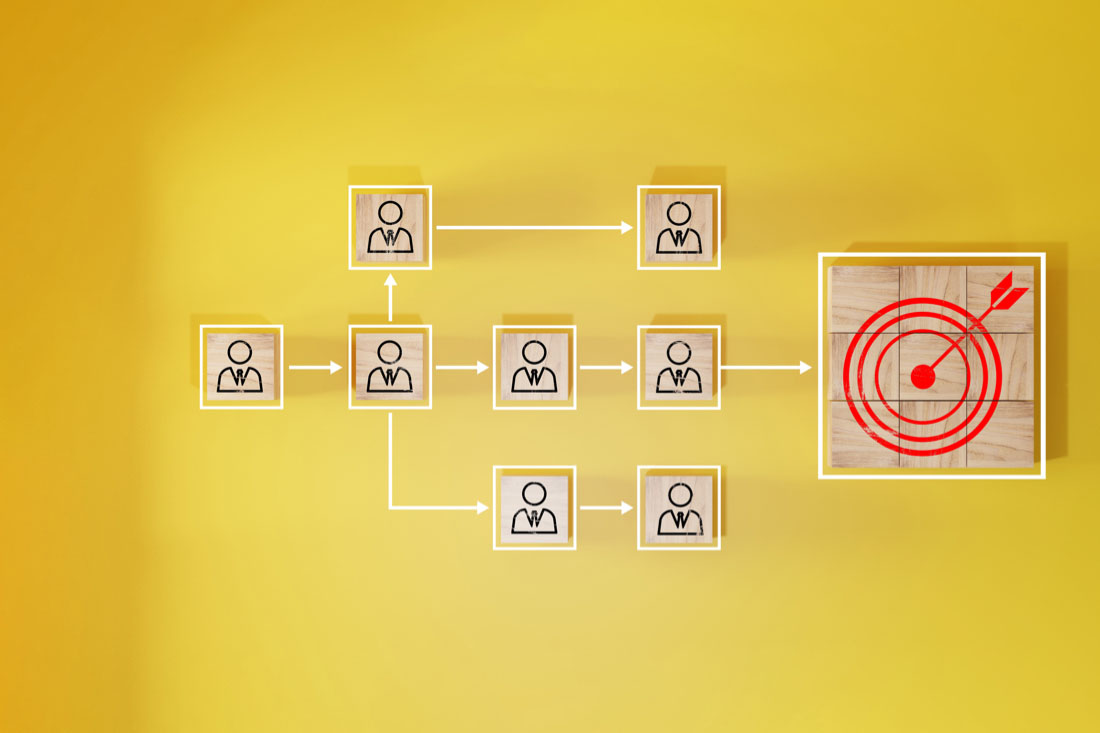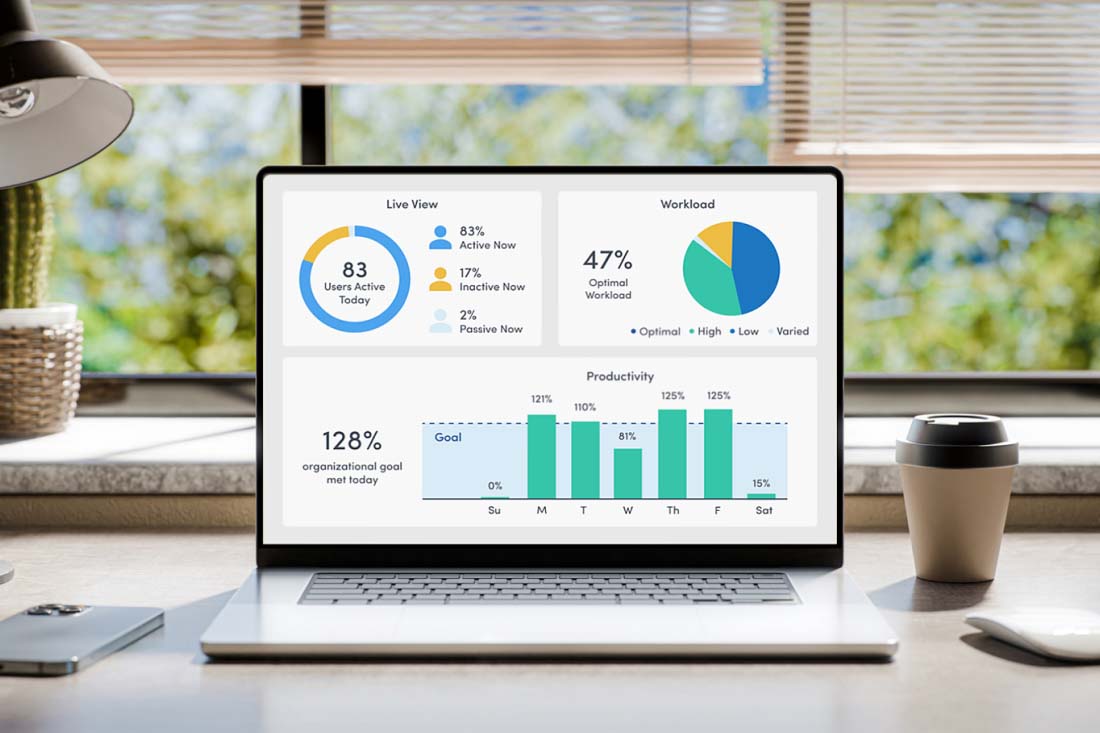When was the last time you stopped to take a good, hard look at your employees’ roles and responsibilities?
If it’s been more than a few months, you need to make this a quarterly planning priority moving forward. Why? Because role alignment is one of the best ways to improve employee productivity.
What is role alignment?
Role alignment is the process of ensuring employees are correctly matched to the responsibilities that suit their skills and strengths. It involves comparing the job description each person was hired to do with their actual day-to-day work.
Role alignment tells you if people are overworked or underutilized, and helps clarify when someone’s ready for the next phase of career development.
For example, if an employee is consistently tackling responsibilities outside their job description, this could be an indicator they need help setting boundaries. Or, if they’re taking on extra work while sticking to a typical 40-hour workweek, it may be time for career advancement. On the other hand, someone who struggles to meet goals may have responsibilities beyond their current capabilities.
An effective role alignment strategy ensures every individual within your organization understands their responsibilities, can meet their goals and recognizes how their roles contribute to overall success of the business.
The importance of role alignment for business success
Your employees may be effective at work now, but if their roles are not strongly aligned to work preferences and motivations, it’s only a matter of time before productivity will start to decline.
The sooner you prioritize role alignment, the better positioned your business will be to realize the many benefits of this strategic process, including:
Greater loyalty
For employees to perform their best, they need to do work that’s personally meaningful to them. According to research from McKinsey & Company, people who feel their purpose is aligned with their company’s purpose are more loyal and engaged than those who don’t. Yet just 18% of surveyed employees say they experience this kind of alignment. While it’s tempting to focus on pay and perks to motivate employees, driving true loyalty requires a more individualized approach that only role alignment can produce.
More productivity
Studies have consistently shown a positive correlation between role alignment and employee productivity. When employees clearly understand their roles and how their work contributes to the overall success of your organization, they’re more likely to produce quality work. For this reason, many businesses adopt a “skills-first approach” when hiring, rather than prioritizing years of experience. Others are focusing on upskilling and reskilling employees to help them stay aligned with responsibilities — an approach roughly two-thirds of workers say would make them more willing to stay.
Operational efficiency
In addition to employee productivity, role alignment also enhances operational efficiency. By matching personal motivations to overall business goals, you can ensure tasks are allocated to the most suitable individuals.
But the benefits don’t stop there. Ongoing role alignment also involves providing the training and support employees need to become more proficient over time. This results in higher retention, fewer redundancies and minimal errors — which in turn leads to cost savings and greater efficiency.
Signs that roles are misaligned
Sometimes, misalignment is obvious. If someone regularly takes on assignments that fall outside their standard scope of work, this is a strong indicator of misalignment. But other clues may be less apparent.
For example, your employees might not be correctly aligned to their roles if you see:
- Imbalanced hours: If some team members are overworked while others have time to spare, there’s a good chance roles need to be realigned.
- Excessive training: If someone regularly spends a large portion of the workweek watching tutorials to complete essential tasks, they may not yet be ready for their current responsibilities.
- Overperformance: If someone completes projects in record time, they may be ready for more challenging work.
- Underperformance: If an employee struggles to understand assignments and meet deadlines, it’s probably time to reassess their responsibilities.
Signs of misalignment can be imperceptible and gradual, such as the overworked high performer whose burnout symptoms fly under the radar. Or they may hit suddenly when someone unexpectedly turns in a two-week notice instead of requesting more training.
The reality is, most organizations have a lot of work to do in this area. While 82% of employees say it’s important for their organizations to see them as people, and not just employees, only 45% believe this is currently the case.
By regularly evaluating role alignment, you can uncover potential issues long before they have a chance to become bigger problems.
Steps to achieving role alignment for your business
Ready to tackle alignment at your organization? Follow these five steps:
1. Define existing roles
The first step toward proper alignment is to clearly define each role. Conduct a thorough analysis of your team’s structure and determine the essential outcomes each person should be contributing. It’s important to involve employees in this process to gain their insights and ensure their buy-in.
2. Assess current responsibilities
Next, test how well each role is aligned to actual responsibilities. This could be as simple as having each employee list their primary and secondary responsibilities, and then comparing those lists to the ones you created in step one above.
3. Identify opportunities for realignment
If steps one and two reveal discrepancies, the next step is to look for opportunities to reallocate and delegate tasks. Again, involve your employees in this process — they’re the best sources of information when it comes to keeping teams aligned.
4. Tie each responsibility to business goals
By aligning individual goals with the strategic goals of your organization, employees can see how their contributions directly impact business success. It’s important to set expectations with clear performance metrics during this step, so employees understand exactly what’s expected of them in their roles moving forward.
5. Set the stage during the hiring process
It’s unfortunate, but true: Job candidates will sometimes overstate experience. For this reason, it’s a good idea to conduct assessments to help identify the best fit for each role from the start. In fact, 80% of executives make hiring decisions based on actual skills, rather than job history or tenure, for this very reason.
Use ActivTrak to improve role alignment in your organization
Role alignment is an important process to help unlock a company’s full potential. But sometimes, it’s difficult to understand exactly what each role should look like — or how it should evolve.
ActivTrak empowers business leaders with workforce analytics that tell you, with a high degree of accuracy, if employees are working in ways that align with their job descriptions. Our employee monitoring software can reveal when someone’s taking on too many extra tasks, while productivity reports help you identify individual strengths. These metrics make it much easier to realign each employee to the most suitable role at every stage of their career.
Request a demo to learn how ActivTrak can help remove the guesswork from role alignment at your organization.





